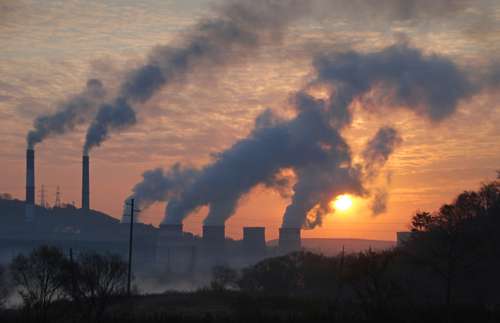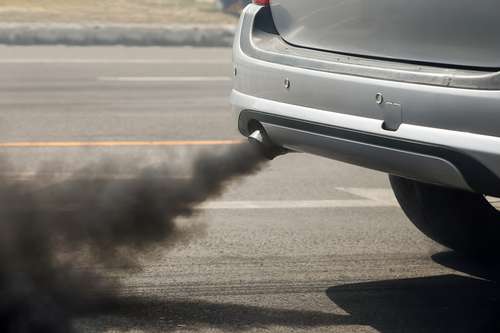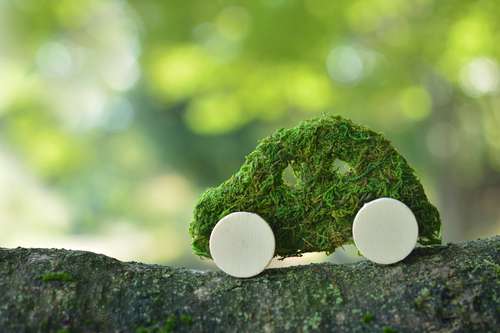
Car pollution: norms, standards and solutions
Content
The pollution of a car includes both the energy embodied in it and the pollution associated with its use (fuel, gas emissions, polluting particles, etc.). To combat this pollution of cars, standards, laws and taxes have been introduced over the years.
🚗 What are the consequences of pollution from cars?

The automobile is an important contributor to pollution for various reasons: its use, of course, due to the use of fossil fuels and the emission of pollutants into the atmosphere, as well as its production and destruction.
Theautomotive which is used to manufacture your car is itself a source of pollution, as is the manufacture of its components and accessories: metal, plastic, as well as materials such as lithiumused for the production of car batteries.
Theextraction of this raw material itself uses natural resources and is a source of pollution. We are talking aboutgray energy : is the energy consumed during the life cycle of the vehicle. Embodied energy is the production, manufacture, transportation, or even recycling of your car, not even counting its use.
The real energy of a car depends, of course, on its model, but we can estimate that the energy of a gasoline city car is about 20 kWh... And contrary to popular belief that the pollution of hybrid and electric cars is less, the embodied energy of an electric car is estimated at about 35 kWh... Indeed, the energy derived from the electric batteries of these cars is very high.
Then, throughout its life, your car will be serviced and repaired, which again requires energy and leads to pollution. The battery will be replaced, as will its tires, fluids, lamps, etc. Then it will run out of life and will have to be disposed of.
If some parts and elements can be reused - this is calledeconomic cycle – Your vehicle also contains hazardous waste (brake fluid, battery, A/C refrigerant), etc. They must be handled differently.
Finally, there is the problem of using your vehicle. Throughout its life, it will consume fuel and give off pollutants and gases. Among them, especially carbon dioxide (CO2), greenhouse gas. This contributes to global warming.
When we talk about car pollution, we often think of CO2, even if it is far from the only source of pollution for a particular car. The amount of CO2 produced by a car varies from car to car depending on many factors such as:
- Le fuel type consumes;
- La fuel quantity consumed;
- La force engine ;
- Le machine weight.
Transport is responsible for approximately 30% greenhouse gas emissions in France, and cars are the source of more than half of this CO2.
However, CO2 is far from the only pollutant emitted by your car. It also gives rise to nitrogen oxides (NOx)which are hazardous to health and are especially responsible for peaks of pollution. There are also small particles, which are unburned hydrocarbons. They cause cancer and respiratory diseases.
On mainland France, fine particles are believed to be responsible for more than 40 death annually, according to the French Ministry of Health. They are especially distinguished by diesel engines.
🔎 How do you know how dirty your car is?

Since a car emits a lot of pollutants and contains a lot of energy, it is inappropriate to talk about pollution levels. In fact, it is impossible to know how dirty a car is. On the other hand, we can know CO2 emissions car, which is not exactly the same, as the car pollutes much more than CO2 emissions.
For new cars, manufacturers are now required to display CO2 emissions. It is necessary. This indicator is measured when testing the car according to the standardWLTP (Globally Harmonized Test Procedure for Light Vehicles), entered into force in March 2020.
For a used car, you can find out about the contamination of the vehicle using a simulatorADEME, Agency for Environmental Protection and Energy.
This simulation is available on the civil service website. To find out about the pollution of your car, you will need to fill in a few data:
- Son brand ;
- Son model ;
- Sa размер (small city car, compact sedan, minibus, etc.);
- Sa bodywork (station wagon, sedan, coupe, etc.);
- Son energy (electric, petrol, gas, diesel ...);
- Sa Transmission (manual, automatic ...).
⛽ How to reduce vehicle pollution?

Over the years, many solutions have been proposed to reduce vehicle pollution. Thus, your car is sure to have anti-pollution devices such as an EGR valve or a particulate filter.
But on your scale, you can also reduce your car's pollution. To do this, you need to apply eco-driving reflexes, for example:
- Don't overuse accessories for example, air conditioning or heating, which, in particular, lead to excessive consumption of fuel;
- Don't drive too fastwhich increases fuel consumption and therefore CO2 emissions;
- Do not slow down in vain and facilitate engine braking;
- Regularly and correctly tire pressure, insufficiently inflated tires consume more;
- Quickly transfer the report and in no case accelerate;
- use speed regulator to reduce acceleration and braking.
Of course, reducing vehicle pollution also requires good maintenance. Perform your services annually to extend its life. Finally, don't buy a new car too often: making a new car produces 12 tons CO2... To compensate for these emissions, you will need to drive at least 300 kilometer.
🌍 What are the solutions to reduce pollution from cars?

For years, legislation has fought against car pollution. Thus, the European Parliament has adopted targets for the reduction of CO2 emissions. Local regulations are also working to reduce vehicle pollution.
Here's how some major French metropolitan areas (Paris, Lille, Lyon, Strasbourg, Marseille, Dijon, etc.) have made it mandatory Crit'air sticker... This certificate indicates the environmental class of the car in accordance with its engine and the European standard for pollutant emissions.
Taxes were also introduced: for example, bonus-environmental fine or carbon tax... Even when you create your gray card, you are paying an additional tax for a car that emits a lot of CO2.
Moreover, some contamination protection devices are now mandatory on your car: a particulate filter, which is installed on all diesel engines, as well as on some gasoline cars, an exhaust gas recirculation valve, an exhaust gas recirculation system, etc.
When technical control, the pollution of your car is one of the measurable indicators. Excessive CO2 emissions can lead to abandonment of technical control. It will be necessary to repair the part and undergo technical inspection.
Finally, there is the question of motorization and fuel. Indeed, diesel is especially harmful to the environment. Already marked with the Crit'air sticker and equipped with pollution control devices, the diesel engine is becoming less popular.
At the same time, alternative technologies such as electric or hybrid vehicles are developing. However, be careful: the embodied energy of an electric vehicle is very important, in part due to the manufacture of its battery. This is even higher than that of a gasoline car.
In other words, you must extend its lifespan as much as possible in order to try to compensate for the high pollution caused by your electric vehicle's life cycle. So remember that the pollution of a car depends not only on CO2 emissions, but also on its entire life cycle, from production to disposal.
As you can see, car pollution is actually a more complex topic than it sounds. If everyone is thinking about gasoline and CO2, this is far from the only source of car pollution. Remember, in order to reduce environmental pollution, you must comply with applicable laws, and repair and maintain your vehicle to extend its life!
